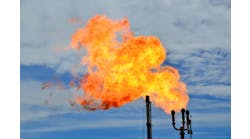Burned alive — that was the ghastly fate of a worker who got trapped between two hot steam pipes in the brewery’s sterilizer area. The skin temperature of the pipe insulation met company standards at 135°F — yet the man was dead.
[pullquote]
Engineers understand the role of insulation for heat conservation and freeze protection. Shielding personnel from burns from hot hardware also is an important role for insulation. However, this too often doesn’t get sufficient scrutiny.
Many facilities such as that brewery use 135°F as the temperature target for personnel protection. Is that really realistic, though? M. McChesney and P. McChesney in a 1981 Chemical Engineering article “Preventing Burns from Insulated Pipe” instead suggest using 113°F for insulation covered with aluminum jackets (and a slightly higher temperature for canvas jackets). This temperature represents the “threshold of pain” for a person. Beyond this value, skin damage grows increasingly numbing so the person doesn’t know how much damage is occurring.
Heat damage is like frost bite: it creeps up on you — exposure time is important. Touching a pipe at 113°F for a couple of seconds causes minor damage while contacting a 135°F pipe even for only a second incurs severe damage. ASTM C1057, “Standard Guide for Heated System Surface Conditions that Produce Contact Burn Injuries,” notes that contact with a 140°F surface must be kept to under five seconds because longer exposure causes third degree (also known as full thickness) burns, i.e., complete and permanent destruction of the outer layer of skin (epidermis) and the entire layer beneath (dermis). Longer exposure times and higher temperatures are prohibited. In addition, always keep in mind that damage doesn’t stop as soon as the person’s skin no longer touches the hot surface.
What this points up is that if you place an operator in an area where the only way to escape requires touching 135°F surfaces for more than a brief period, you are risking that person’s life unnecessarily. Instead, common sense dictates keeping the temperature lower — a maximum of 126°F to avoid anything more than first degree burns (pain and reddening of the epidermis) but ideally below the pain threshold of 113°F. Always remember, an operator in pain isn’t thinking clearly.
I suggest designing for a maximum insulation skin temperature of 110°F. Unfortunately, though, many engineers don’t estimate insulation skin temperature properly.
One common error is not accounting for radiation. Years ago, I corrected a professor during a review course for the professional engineer’s examination for missing the radiation term. Not surprisingly, when radiation is taken into account, the outer jacket affects the skin temperature: dull surfaces decrease the skin temperature by restricting radiation from the jacket; shiny surfaces increase jacket skin temperature by augmenting radiation. The emissivity coefficient, ε, of a matte canvas jacket is 0.9 versus 0.09 for a shiny new aluminum jacket; that aluminum jacket gets duller with age. Black is better than light colors in reducing the allowable skin temperature.
The type of jacket is a serious safety concern. The McChesneys’ article indicated the heat flux of a shiny new aluminum jacket is 14× higher than that of an old canvas jacket. This confirms an everyday experience that shiny pipe jackets are hotter than dull ones.
One common problem with most radiation calculations is an inaccurate value of emissivity. For a 1,100°F steam pipe, the difference in insulated pipe skin temperature between a painted canvas jacket and an aluminum one can amount to 30°F; so, use a healthy safety factor.
Of course, maintenance lapses can compromise the best design. Care of insulation often doesn’t get adequate attention. Some facilities only deal with insulation issues as part of their annual maintenance while others completely ignore insulation until forced to by a major project.
For a more detailed analysis of protection of personnel from hot surfaces, I strongly recommend that you read the McChesneys’ article (which, by the way, OSHA references in its standards). You’ll have to go to your local engineering library because it’s not available online. Other useful references include:
http://goo.gl/svGrns
http://goo.gl/mSYf5R
http://goo.gl/m9Na7k



